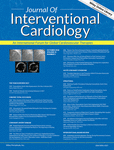A novel double snare technique to retrieve embolized septal and left atrial appendage occluders
Abstract
Background
Device embolization is the most frequent procedural complication during transcatheter closure of congenital cardiac defects. Retrieval of an embolized device may often be complicated by failure to introduce the right atrial (RA) disk hub into the sheath or difficulty in securely grasping the hub pin of RA disk. We aimed to evaluate the efficiency and success rate of device retrieval using a novel double snare technique.
Methods
We reviewed retrieval procedures of embolized atrial septal defect (ASD) or left atrial appendage (LAA) occluder using double snare technique reported from five tertiary referral centers in Korea, Japan, and Uzbekistan. A total of 16 retrieval procedures in 15 patients were reported, including 14 patients who were planned for ASD device closure while 1 patient was planned for LA appendage occlusion.
Results
Retrieved devices included 15 ASD occluders from six different manufacturers and one Amplantzer cardiac plug. Success rate of retrieval procedure was 100% using the double snare technique. There were no complications related to device retrieval. Most (15/16, 93.8%) of these devices could be retrieved through their original delivery sheaths. In six patients for whom retrieval was unsuccessful with conventional single snare technique and switched to double snare technique, the retrieval time was shortened significantly (P = 0.004*) by using the double snare technique.
Conclusions
The double snare technique enables effective retrieval of various embolized devices. It abolishes the need of changing the sheath to a larger one in most patients.
CONFLICTS OF INTEREST
All authors declare no any financial support or relationships that can pose conflicts of interest by disclosing any financial arrangements they have with a company whose product figures prominently in the submitted manuscript or with a company making a competing product, or no any conflict relating to technology or methodology. There is nothing to disclose any interest in this manuscript.




